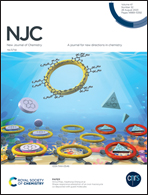Type-effects of multiple waste-sourced biochar feedstocks on methylene blue adsorption†
Abstract
Research on the environmental application of biochar from waste could lead to a greater extent of rational applications. 29 wastes were selected to prepare biochar under N2 heat treatment. The microstructures were studied, the physicochemical properties of biochar were analyzed with respect to parameters such as elemental, ash, volatile fraction, fixed carbon content, pH, specific surface area, pore size and total pore volume and other parameters. The biochars were shown to have a high pH (8.6–10.3) and a surface rich in basic groups, thus facilitating the adsorption of the cationic dye methylene blue (MB). Among them, Auricularia auricula spent mushroom substrate biochar (AAMB) showed a large number of tightly arranged micron-sized longitudinal channels, with the largest specific surface area (341.1 m2 g−1) and total pore volume (0.149 cm3 g−1), significantly higher than that of other reported biochars with a rich pore structure. The results suggest that the adsorption capacity of biochar for MB is greatly influenced by the type of biochar feedstock, involving many decisive factors. The adsorption process of AAMB for MB involved monolayer chemical adsorption and intra-particle diffusion, while the adsorption of other biochar involved different physical and chemical processes, which has wide application prospects in the environmental field.



 Please wait while we load your content...
Please wait while we load your content...